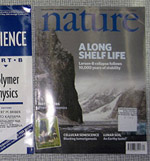Urban stream restoration failing to find success
 Freshwater,
Freshwater,  Invertebrates,
Invertebrates,  Restoration
Restoration A new study raises doubts about the ability of stream restoration projects in urbanized watersheds to mitigate against human impacts and improve ecological conditions.
Christy Violin and fellow researchers evaluated 4 urbanized streams in North Carolina that had undergone Natural Channel Design restoration at the reach scale. This approach involves using heavy machinery to re-contour and reshape a degraded channel back towards something resembling an unimpacted state.
A key assumption underlying these projects is that by restoring certain reach-scale characteristics like channel shape, they can reverse some of the negative impacts to streams from urbanization and increase habitat complexity and species diversity.
However in comparing these 4 urbanized sites to 4 forested streams mostly free of urban impacts, the study found that habitat structure and diversity in the restored sites had not progressed towards the forested conditions. Furthermore the researchers compared the restored sites to 4 urbanized streams which had never undergone restoration and found little difference in conditions.
“Urban streams had significantly deeper channels, smaller substrate sizes and less reach scale habitat variation (transitions between riffles, runs and pools) than their forested counterpart.” The authors write. ”For each of these metrics, urban restored streams were indistinguishable from their urban degraded counterparts and significantly different from the forested streams."
Restored urban streams had less canopy cover than non-restored urban streams, presumably because of the use of heavy machinary in the projects.
Species diversity of macroinvertebrates was similar among the urbanized and forested streams. But the species composition of forested streams contained more water-quality sensitive macroinvertebrates while urbanized streams contained more pollution-tolerant species. The researchers also looked at the age of the projects and found that there was little progression towards reference conditions over time.
The study results indicate that larger-scale watershed problems prevent restoration success. Watershed imperviousness was the best indicator of the species richness of water quality-sensitive macroinvertebrates.
“The deep, sandy, simplified channels in urban catchments suggest that hydrological differences, particularly storm events, are the major habitat structuring force in our study channels,” the researchers write. “Stormwater is rarely, if ever addressed by Natural Chanel Design.”
The study results are important, because stream restoration in urban environments is expensive and consumes a substantial amount of limited conservation dollars. Furthermore, in the case of legally mandated mitigation, urban stream restoration is frequently required by agencies in exchange for allowing negative impacts elsewhere under the assumption that it can compensate for those impacts.
Given the findings, the authors recommend, “Expanding urban restoration planning beyond the reach scale to include watershed-scale impacts will lead to better restoration design and more positive restoration outcomes.”
--by Rob Goldstein
Violin, C., Cada, P., Sudduth, E., Hassett, B., Penrose, D., & Bernhardt, E. (2011). Effects of urbanization and urban stream restoration on the physical and biological structure of stream ecosystems. Ecological Applications DOI: 10.1890/10-1551.1




Reader Comments